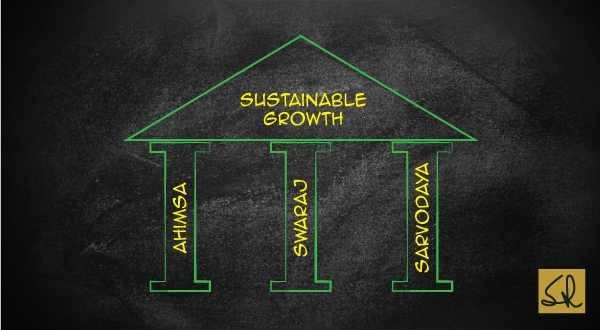Gandhian Model for Sustainable Growth

Trusteeship
Trusteeship is a socio-economic philosophy that was propounded by Mahatma Gandhi, in the 1940s. It provided a means by which the wealthy would be the trustees of trusts that looked after the welfare of the people in general.
The Mahatma was convinced that the wealthy could be persuaded to part with their wealth to help the poor. In a sense, this sentiment is at the heart of Corporate Social Responsibility.
The Gandhian Model of Trusteeship is a proactive model because it defines the core values and conduct that a business must cement. There is no flexibility.
Sustainable Growth
For the Mahatma, sustainable development implied a form of economic growth that could sustain the lives of the poor in rural India, as well as the economy, for decades.
The Gandhian Model for sustainable growth rests on three pillars:
- Ahimsa (non-violence): This can be interpreted as causing no harm to Mother Earth
- Swaraj (self-control): This can be interpreted as effective decision-making
- Sarvodaya (benefits to all): This can be interpreted as welfare for all.
Was this Green Quality? Is this Green Quality?
Uniquely Indian
The Gandhian Model of Trusteeship is uniquely Indian. It provides a means to transform the present unequal order of society into an egalitarian one.
This Trusteeship Model, or avatars of the same, have been adopted by: The Tata Group; The Godrej Group; The Aditya Birla Group; The Bajaj Group; to name a few. Wish there were many more.
However, do the current challenges of climate change, economic collapse, and job losses necessitate an aggressive adoption by many, many more?
